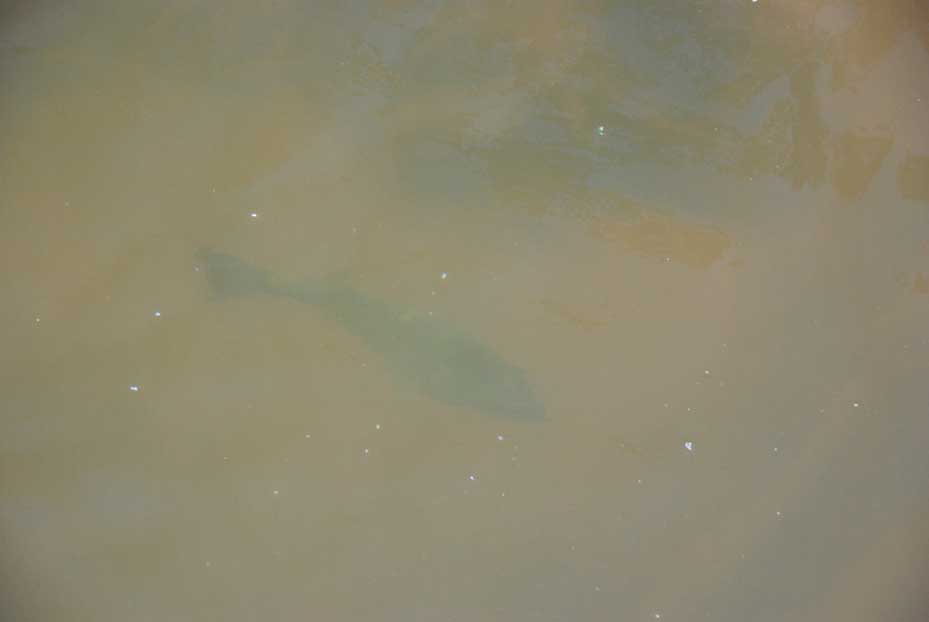Murky water in dams is enough to make your entire waterbody look unhealthy and it can be very frustrating, even worrying, especially if fish live there or wildlife depends on the water.
Cloudy water might seem the same, but actually there are two types: muddy and murky. The distinction will enable you to diagnose the cause so you can start moving towards finding the right solution.
This article explains why water gets murky and shows you how to fix it. If your water doesn’t look as clear as before, you’re in the right place.
Muddy vs Murky: How to Tell Them Apart
Inorganic particles like dirt, clay, or silt cause muddy water. It’s usually brown and gritty. It comes from erosion, runoff, or fish stirring up dirt at the bottom.
Organic materials cause murky water. For example, algae, bacteria, decaying plants, and fish waste can cause this. The water might look green, grey, brownish like tea, or milky, and it often smells.
You can tell by looking:
- Muddy water is: Brown, opaque, feels gritty between your fingers.
- Murky water is: Greenish, brownish, grey, or cloudy with a soft feel and organic smell.
What Causes Murky Water?
So your water is murky. But what’s causing it? Here are some ideas:
Decomposing Organic Matter
Anything from leaves to clumps of dead algae, all sink to the bottom of a waterbody. They start to break down once they’re there. Tiny particles, tannins (plant-based dyes), and dissolved organic compounds are released into the water as this happens.
Why does this matter?
If too much decomposing material builds up, it forms a thick layer of sludge at the bottom, locking in nutrients that will keep fuelling algae blooms and murkiness for years unless treated.
Signs this is happening are:
- Brown or tea-coloured water
- Small plant fragments when viewed closely
- Persistent murkiness even when algae aren’t visible
- A sour, earthy, or decaying smell
Solutions:
- Physical removal: To remove this debris before it breaks down further, you can use pond nets, weed rakes, vacuums, or bottom drains.
- Biostim: Add helpful bacteria that break down sludge and organic particles in the water.
- Aeration: Boosts oxygen levels to help break down waste faster and stop oxygen-free decay that causes bad smells.
Excess Fish Waste & Uneaten Food
Most people who own a pond, dam, or lake want fish. They are a symbol of water health and a great way to support nature. However, too many can sometimes cause issues. Fish waste, as well as with uneaten fish food, sinks and decomposes just like plant material. As a result, this releases ammonia and other nutrients that weeds and algae feed on.
It matters because:
Oxygen crashes, harmful ammonia spikes, and lasting cloudiness happen when organic waste builds up too much and isn’t dealt with.
Signs:
- Milky, grey-green water.
- Foamy or greasy surface film, especially in warm weather.
- Algae blooms following feeding times.
Solutions:
- Feed smarter: Only give fish what they can eat in 2–3 minutes.
- Control stocking levels: Overcrowding amplifies waste production.
- Biological filtration: Helps process waste naturally.
- Biostim Liquid or Powder: Targets suspended waste in the water column quickly.
Bacterial & Plankton Blooms
Not all cloudy water is caused by algae. Certain bacteria and other plankton can multiply so rapidly that they turn water milky or greyish-white. While these blooms aren’t always dangerous, they’re a sign that nutrients and conditions are favouring the wrong kinds of microbes.
Common triggers are:
- Sudden temperature swings (spring and summer are peak times)
- Excess nutrient input from fertilisers, manure, or decaying organics
- A sudden spike in decomposition after storms or plant die-offs
It’s important because:
These blooms compete with beneficial microbes and can choke oxygen from the system overnight.
Solutions:
- Aeration: Boosts oxygen and circulation, favouring healthy aerobic bacteria over harmful ones.
- Nutrient control: Keep fertilisers and organic runoff out.
- UV sterilisation (for small ponds): Clears free-floating microorganisms quickly.
Algae Blooms
When nutrient levels are high, tiny planktonic algae (microscopic plants floating in the water) can grow rapidly, making your water bright green or thick like pea soup.
It matters because:
Dense algae blooms block light, reduce oxygen at night, and can release toxins harmful to fish and wildlife, apart from ruining the look of your pond.
Signs:
- Green or yellow-green water
- Surface scum or floating mats of algae
- Musty, swampy odour
Solutions:
- Nutrient competition: Plant more aquatic vegetation to outcompete algae for food.
- Aeration: Keeps water moving and oxygen-rich, making it less hospitable to algae.
- Runoff prevention: Stop fertilisers, manure, and decaying organics from entering the water.
Low Oxygen Levels
A healthy body of water needs oxygen. When levels drop, decomposition slows, sludge builds up, and harmful microbes and algae get the upper hand.
The reason why it matters is:
Low oxygen is a very common cause of murky water. It allows organic matter to grow and thrive faster than it can be broken down.
Signs oxygen levels are low are:
- Fish gathering or gasping at the surface
- Still, stagnant areas with foul smells
- A thick sludge layer on the bottom
Solutions:
- Surface aerators: Great for immediate oxygen boosts in smaller ponds.
- Sub-surface aerators: Best for deeper water, circulating oxygen throughout the water column.
- Sludge reduction: Remove debris and use Biostim Pellets or Tablets to digest bottom waste.
Prevention: Your Long-Term Clarity Plan
Once you know what you’re looking for, you can take action and prevent murky water altogether.
To do this:
Use Beneficial Bacteria Year-Round
Adding treatments regularly helps break down organic waste before it causes murkiness in your pond or lake. That’s where Biostim comes in. Murky water is caused by leftover plants, fish waste, and other organic debris, which this beneficial bacteria is specially designed to digest.
How Biostim Works:
- Biostim Powder and Biostim Liquid are fast-acting solutions for treating the water column; the open water above the bottom. They work quickly to clear cloudy water by breaking down suspended organic particles causing murkiness. Think of them as a cleanup crew swimming through the water, eating away at the waste causing the haze.
- Biostim Pellets and Biostim Tablets target the sludge layer at the pond or lake bottom. They reduce the nutrients that feed algae and aquatic weed blooms by breaking down this thick buildup of decomposing material. This helps prevent murkiness from returning over time.
Control Nutrients at the Source
- Limit fertiliser use near water.
- Fence livestock away from shorelines.
- Plant vegetative buffer strips to filter runoff.
- Install Weed Booms to contain floating weed infestations. These are floating barriers that stop aquatic weeds from spreading in ponds, dams, rivers, and canals.
Aerate Correctly
For proper aeration, you can use either a surface or sub-surface aerator, as each offers different benefits for different bodies of water.
The differences are:
- Surface aerators: Immediate oxygenation for small or shallow ponds.
- Sub-surface aerators: Ideal for larger, deeper lakes, improves circulation and prevents stagnant “dead zones.”
Keep Debris Out
- Skim leaves and plant matter regularly
- Trim overgrown aquatic plants
- Use a Deskuzzer to manually remove floating debris before it sinks. This product is 100% American made and is the fastest and most effective tool for manually clearing floating aquatic weeds. Using the Deskuzzer is an easy way to clear the surface of your water.
Final Thoughts
If you’ve noticed that your water isn’t looking it’s healthiest, now you’ll know whether it’s murky or muddy. You now know how to stop the problem and prevent it from happening again. If something isn’t right, murky water is your pond, dam, or lake’s way of telling you.
Clear, healthy water can be restored with regular care, managing nutrients, proper aeration, and using Biostim.
Get FREE advice
Want more information or FREE customised advice? Get in touch with us and speak to the experts.

